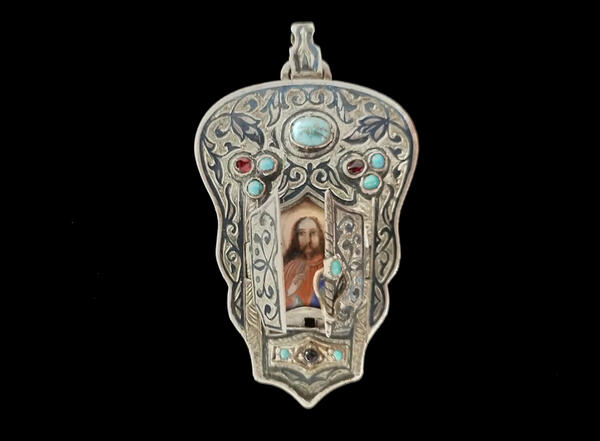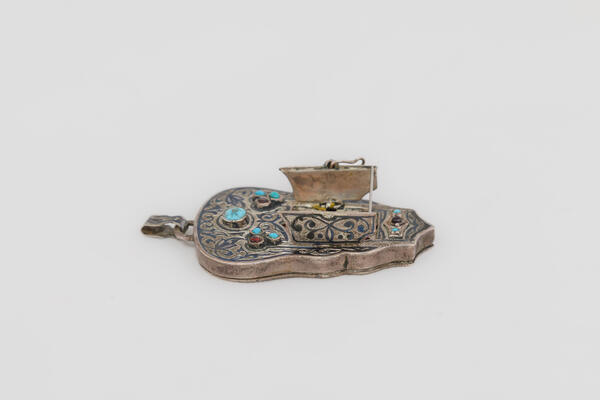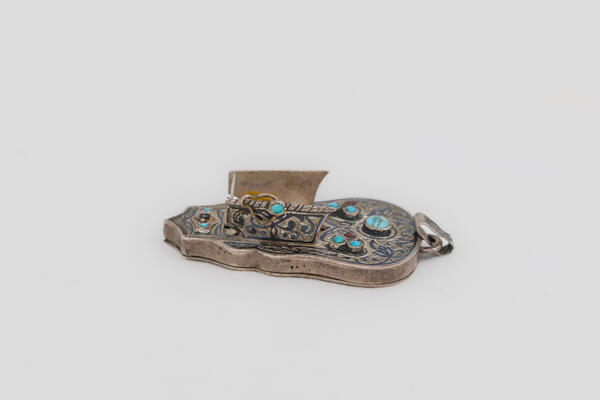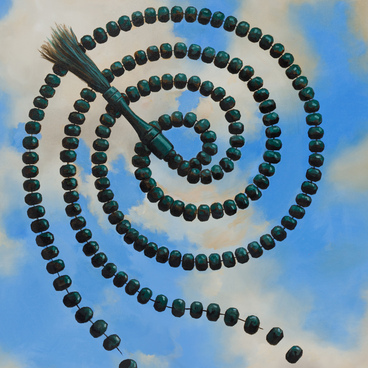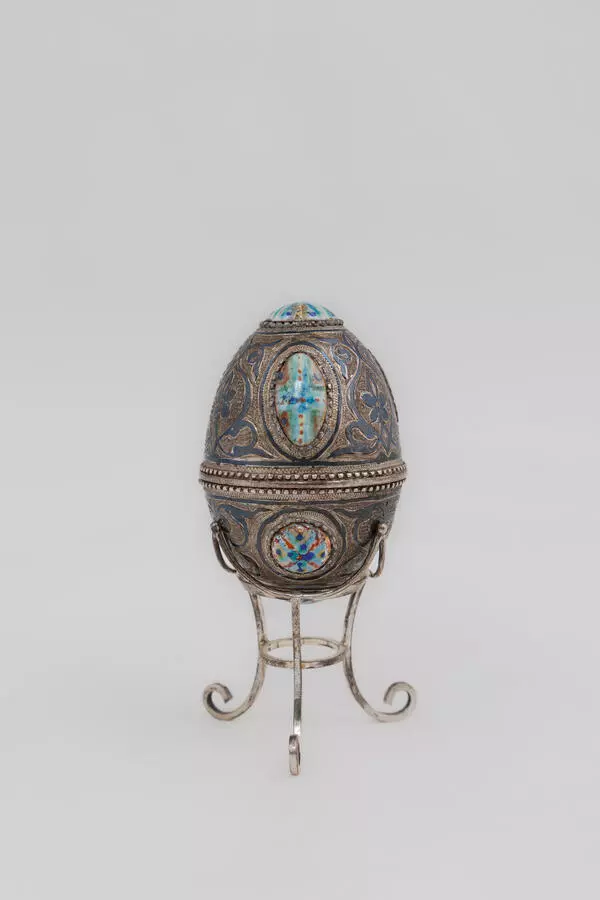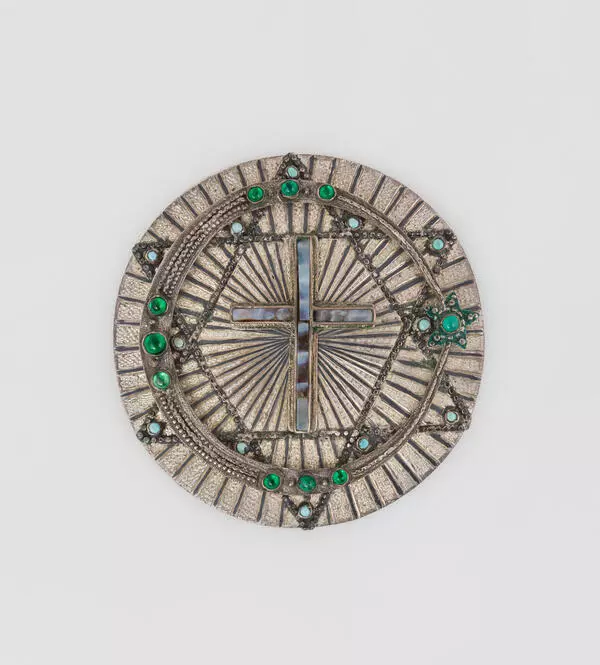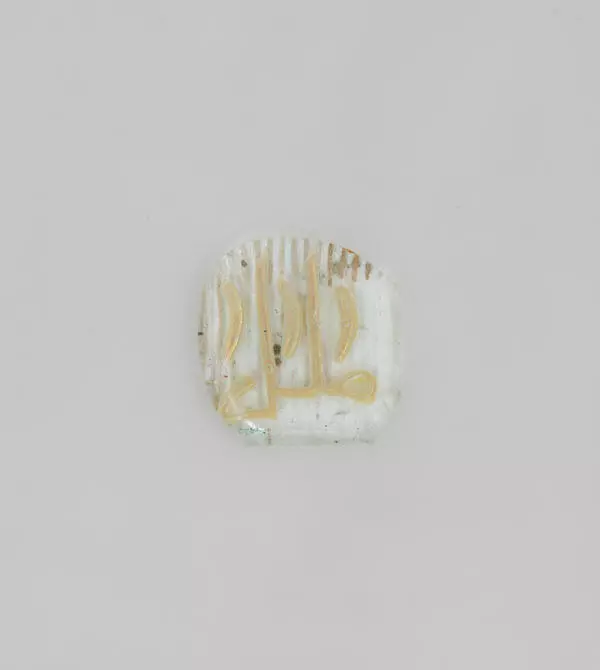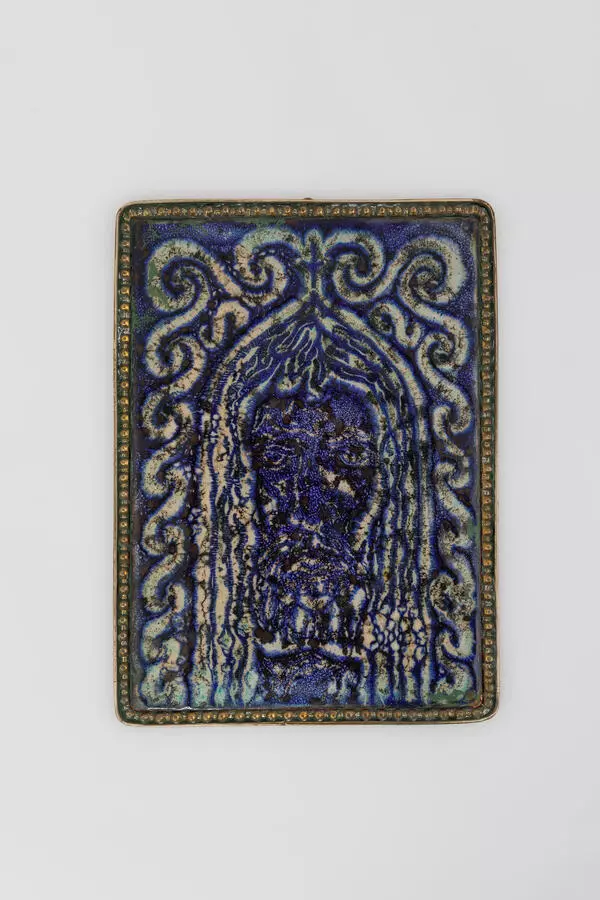Panhagia means “all holy one” in Greek. It is a small richly decorated image of the Mother of God, which prelates wear on their breasts to commemorate the miraculous appearance of the Theotokos after her resurrection. Less commonly, a panhagia depicts the Savior, the Holy Trinity, the faces of saints, the crucifixion, and biblical scenes. The panhagia “Christ Pantocrator” from a collection of the Museum of World Cultures and Religions is made by Manaba Magomedova, a Dagestan jeweler, the first female goldsmith, a winner of republican, all-Union and foreign contests. The artist Leyla Izabakarova, Manaba’s daughter, co-creator of the work, donated the panhagia to the museum in 2014.
A panhagia resembles a bunch of grapes. In the Orthodox Christian tradition, it is a symbol of union between God and mankind, spiritual life, salvation and rebirth. The Bible describes the vine as the emblem of the Promised Land and the sign of God’s chosen people. The piece is painted with traditional Kubachinsky niello patterns in the form of leaves, buds, shoots and flexible branches. The panhagia is decorated with precious and semi-precious stones, each of which carries a special meaning. It is a reminder of the twelve tribes of Israel, and according to the Revelation of the Apostle John the Theologian, these stones will build the walls of the Heavenly Jerusalem. Manaba Magomedova’s panhagia is inlaid with garnet and turquoise, and the stones are chosen according to the significance of the colors. Red is the symbol of Easter, the Resurrection of God, blood and the victory of life over death. The Mother of God, Queen of Heaven is traditionally dressed in red. The blue color of turquoise symbolizes chastity and heavenly purity of the Virgin.
In the center of the panhagia are the flaps, behind which the icon of “Christ the Pantocrator” is hidden. This is the main image in the iconography of Jesus Christ, representing him as the Heavenly King and Judge, with a scroll or gospel in his left hand and his right hand folded in a gesture of blessing. The icon of the panhagia differs from the traditional one: Jesus is depicted in royal robes, and in his hands, instead of the Holy Scriptures, are a scepter and an orb, insignia of supreme power. Above the savior’s head is a halo, a symbol of heavenly origin. The icon behind the flaps of the panhagia is painted in enamel. It is the work of Manaba Magomedova’s daughter, the artist Leyla Izabakarova.
A panhagia resembles a bunch of grapes. In the Orthodox Christian tradition, it is a symbol of union between God and mankind, spiritual life, salvation and rebirth. The Bible describes the vine as the emblem of the Promised Land and the sign of God’s chosen people. The piece is painted with traditional Kubachinsky niello patterns in the form of leaves, buds, shoots and flexible branches. The panhagia is decorated with precious and semi-precious stones, each of which carries a special meaning. It is a reminder of the twelve tribes of Israel, and according to the Revelation of the Apostle John the Theologian, these stones will build the walls of the Heavenly Jerusalem. Manaba Magomedova’s panhagia is inlaid with garnet and turquoise, and the stones are chosen according to the significance of the colors. Red is the symbol of Easter, the Resurrection of God, blood and the victory of life over death. The Mother of God, Queen of Heaven is traditionally dressed in red. The blue color of turquoise symbolizes chastity and heavenly purity of the Virgin.
In the center of the panhagia are the flaps, behind which the icon of “Christ the Pantocrator” is hidden. This is the main image in the iconography of Jesus Christ, representing him as the Heavenly King and Judge, with a scroll or gospel in his left hand and his right hand folded in a gesture of blessing. The icon of the panhagia differs from the traditional one: Jesus is depicted in royal robes, and in his hands, instead of the Holy Scriptures, are a scepter and an orb, insignia of supreme power. Above the savior’s head is a halo, a symbol of heavenly origin. The icon behind the flaps of the panhagia is painted in enamel. It is the work of Manaba Magomedova’s daughter, the artist Leyla Izabakarova.

